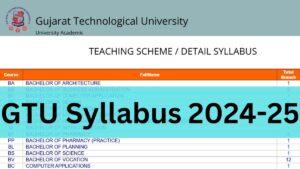Table of Contents
NCERT Solutions for Class 10 Social Science Geography Chapter 3 Water Resources- Introduction
NCERT Solutions for Class 10 Social Science Geography Chapter 3 Water Resources is given in the article.NCERT Solutions Class 10 is the best resource for obtaining a good score in the class 10 board Examination. The NCERT Solutions will aid your preparation for the CBSE examinations for Class 10 Social Science Geography Chapter 3 Water Resources. Here are Adda247 Expert faculty team prepared NCERT Solutions for Class 10 Social Science Geography Chapter 3 Water Resources along with in-text questions and exercises of that chapter for a better grasp of the topics. These solutions will help you understand the concepts covered in the chapter completely. So that students can pass their board exams with good scores. Keep learning with Adda247.
Read: NCERT Solutions for Class 10 Social Science Geography Chapter 4 Agriculture
NCERT Solutions for Class 10 Social Science Geography Chapter 3 Water Resources: Quick Revision
NCERT Solutions for Class 10 Social Science Geography Chapter 3 Water Resources PDF
Click here to download NCERT Solutions for Class 10 Geography Chapter 3 Water Resources
NCERT Solutions for Class 10 Social Science Geography Chapter 3 Water Resources Question and Answers
1. Multiple choice questions.
(i) Based on the information given below classify each of the situations as ‘suffering from water scarcity’ or ‘not suffering from water scarcity’.
(a) Region with high annual rainfall.
(b) Region having high annual rainfall and large population.
(c) Region having high annual rainfall but water is highly polluted.
(d) Region is having low rainfall and low population.
Ans:(a) A region with high annual rainfall – Not suffering from water scarcity
(b) A region having high annual rainfall and a large population – Suffering from water scarcity
(c) A region having high annual rainfall but water is highly polluted – Suffering from water scarcity
(d) A region having low rainfall and low population- Not suffering from water scarcity
(ii) Which one of the following statements is not an argument in favor of multipurpose river projects?
(a) Multi-purpose projects bring water to those areas which suffer from water scarcity.
(b) Multi-purpose projects by regulating water flow helps to control floods.
(c) Multi-purpose projects lead to large-scale displacements and loss of livelihood.
(d) Multi-purpose projects generate electricity for our industries and our homes.
Ans: (c) Multi-purpose projects lead to large-scale displacements and loss of livelihood.
(iii) Here are some false statements. Identify the mistakes and rewrite them correctly.
(a) Multiplying urban centers with large and dense populations and urban lifestyles have helped properly utilize water resources.
(b) Regulating and damming of rivers does not affect the river’s natural flow and its sediment flow.
(c) In Gujarat, the Sabarmati basin farmers were not agitated when higher priority was given to water supply in urban areas, particularly during droughts.
(d) Today in Rajasthan, the practice of rooftop rainwater water harvesting has gained popularity despite high water availability due to the Indira Gandhi Canal.
Ans: (a) Multiplying urban centers with large and dense populations and urban lifestyles have resulted in improper utilization of water resources.
(b) Regulating and damming of rivers does affect the river’s natural flow and its sediment flow.
(c) In Gujarat, the Sabarmati basin farmers were agitated when higher priority was given to water supply in urban areas, particularly during droughts.
(d) Today in Rajasthan, the practice of rooftop rainwater water harvesting popularity has declined due to high water availability from Indira Gandhi Canal.
2 . Answer the following questions in about 30 words.
(i) Explain how water becomes a renewable resource.
The primary sources of freshwater are surface runoff and groundwater, which is continuously replenished and recharged by the hydrological cycle. These are the three steps in the hydrological cycle:
- Evaporations
- Condensation
- Precipitation
The hydrological cycle ensures that all water travels, making it a renewable resource.
(ii) What is water scarcity and what are its main causes?
When a region’s supply of potable, unpolluted water is insufficient to meet demand, The lack of water is known as water scarcity,
Water resource availability fluctuates over time and geography, primarily due to differences in seasonal and annual precipitation, but in most situations, water shortage is brought on by overuse, excessive consumption, and uneven access to water among various socioeconomic groups.
Agriculture that is irrigated uses the most water overall. A huge population necessitates more water, both for home use and for food production. Therefore, water resources are being overused to increase irrigated areas for dry-season agriculture in order to promote higher food-grain output.
(iii) Compare the advantages and disadvantages of multi-purpose river projects.
Regulating River water by building dams or changing its direction offers stable water irrigation for agriculture, but on the other hand, it heavily damages our environment. Let’s examine the Advantages and Disadvantages of Multipurpose River projects.
Advantages of Multipurpose River projects
- Irrigation- Building dams on river bodies provide continuous water sully through the year for irrigation.
- Generation of electricity- Hydropower Generation through the dam is very frequent as fossil fuels are about to finish.
- Flood prevention-Floods have been brought on by the dams that were built to manage floods as a result of sedimentation in the reservoir. The large dams have also generally failed to prevent flooding during periods of severe rainfall.
Attraction for Tourists
Disadvantages of Multipurpose River projects
- Multipurpose river projects have poor aquatic ecosystems as their primary drawback. It is a result of significant sedimentation at the reservoir’s base, which creates rockier stream beds.
- Multipurpose river projects also have the drawback of interfering with rivers’ natural flow, which results in inadequate sediment flow.
- The vegetation and soil beneath the submerged water slowly decompose, making it difficult for aquatic animals to migrate and breed.
3 . Answer the following questions in about 120 words.
(i) Discuss how rainwater harvesting in semi-arid regions of Rajasthan is carried out.
Traditionally, nearly all the homes in Rajasthan’s semi-arid and desert regions, particularly in Bikaner, Phalodi, and Barmer, had subterranean tanks called tankas for storing drinking water. The tanks might be the size of a huge room. One Phalodi home had a tank that was 6.1 metres deep, 4.27 meters long, and 2.44 meters broad; the tanks may be as enormous as a large room. The tankas were constructed inside the main house or the courtyard and were a part of the sophisticated rooftop rainwater gathering system. They had a hose connecting them to the dwellings’ sloping roofs. These underground “tankas” served as storage spaces for rain that fell on the rooftops and traveled down the pipe.Rain from the rooftops would go down the pipe and be collected in these underground “tankas,” where it would be stored. Since the first downpour would clean the roofs and pipes, most people don’t collect it. Then, rainwater was collected from the succeeding showers. When all other supplies of drinking water have dried up, especially during the summer, the rainwater may be stored in the tankas until the next rainfall, making it an incredibly reliable source. The purest natural water is regarded to be rainwater, or “palar pani,” as it is known locally.
(ii) Describe how modern adaptations of traditional rainwater harvesting methods are being carried out to conserve and store water.
An environmentally and socio-economically sound alternative is a water harvesting system. There was a remarkable heritage of water harvesting systems in ancient India, combined with well-developed hydraulic constructions Rainwater Harvesting methods carried out to conserve and store water is
- People in hilly and mountainous areas constructed irrigation channels for agriculture, similar to the “guls” or “kuls” of the Western Himalayas.
- Tanks have traditionally been built in homes in Rajasthan’s semi-arid regions to store drinking water. They are substantial and a component of the sophisticated rooftop rainwater harvesting system. The tanks are built inside the main house or the courtyard and attached to the dwellings’ sloping roofs by a conduit. Rain that falls on the roof is carried down and stored in the tanks. The initial downpour is not collected since it cleans the pipes and roof. The ensuing spells’ rainwater is gathered. This water is a dependable source of water even when other sources have dried up and can be used until the next season.
- Traditional rainwater gathering techniques, such as “the rooftop method,” are gaining popularity in India. About 200 families in Gendathur village, Mysore, have embraced the rooftop rainwa collection technique, making the village rich in rainwater. All homes in the state of Tamil Nadu are required to install rooftop rainwater collection systems.
Found this article helpful?
Reach us by means of a visit or call our senior instructor at +91-9625869989 to figure out additional information about the various choices and streams that are open.
We would really see the value in it on the off chance that you could grant a portion of your insight. By utilizing our application, tests, and YouTube class help, you can unwind any vulnerability, assuming you’re centered around getting the best grades Adda247.
NCERT Solutions for Class 10 Social Science Geography Chapter 3 Water Resources-FAQs
Q.How can I access the online PDF of the NCERT Solutions for Class 10 Geography Chapter 3?
Ans. you can download the detailed NCERT Solutions for Class 10 Geography Chapter 3 PDF from the link given in the article,
Q.How does using Adda247’s NCERT Solutions for Class 10 Social Science Geography Chapter 3 Water Resources benefit you?
Ans. The advantages of using Adda247’s NCERT Solutions for Class 10 Social Science Geography Chapter 3 Water Resources are as follows:
- A video explanation is provided to students in addition to the NCERT solution.
- Additionally, a PDF is included, which can be downloaded and saved for later use.
Q. Are the solutions for other subjects also available?
Ans. Yes, NCERT solutions for all the subjects are available on Adda247.


 MBA HR Syllabus 2025 Out, Check MBA HR S...
MBA HR Syllabus 2025 Out, Check MBA HR S...
 NATA Syllabus 2025, Check Subject Wise D...
NATA Syllabus 2025, Check Subject Wise D...
 GTU Syllabus 2024-25 Out, Download Lates...
GTU Syllabus 2024-25 Out, Download Lates...































